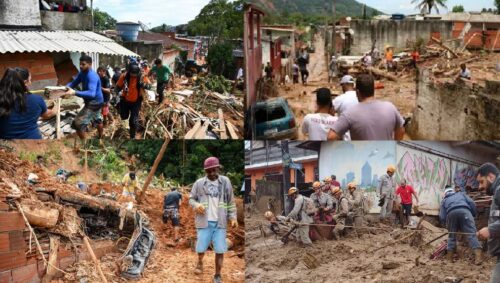Of this number, Colonel Henguel Pereira said, 53 deaths were reported in the city of Sao Sebastiao and one in Ubatuba.
The state government also announced that 38 bodies were identified and prepared for burial.
The victims are 13 men, 12 women and 13 children.
The other corpses are still awaiting examination and identification.
The G1 portal reports that six days after the tragedy, about 30 people are still missing.
According to the Civil Defense, there are more than four thousand displaced or homeless people.
Firefighters, Civil Defense workers and volunteers continue to search without interruption.
The action is reduced during the night and in the morning the teams of rescuers are reinforced.
The search work is taking place especially in neighborhoods on the southern coast of Sao Sebastiao, such as Vila Sahy, the area where most of the victims of the disaster are concentrated, and Juquehy.
The governor of Sao Paulo, Tarcisio de Freitas, acknowledged that the SMS disaster warnings are not effective, and he would install alarm sirens in risk areas of the state.
Throughout the day of the tragedy, registered residents received messages, but none took into account the extent of the bad weather and landslides.
Similarly, some of the affected areas had no phone nor internet signal on the night of February 18, as messages were going out.
The Civil Defense indicated that the volume of rainfall in 24 hours last weekend exceeded what was expected for the whole of February in three of the four cities on the northern coast of Sao Paulo: Sao Sebastiao, Ilhabela, Caraguatatuba and Ubatuba.
mh/jav/mem/ocs










